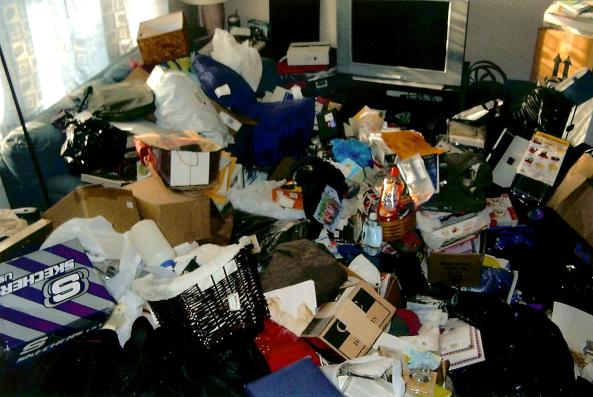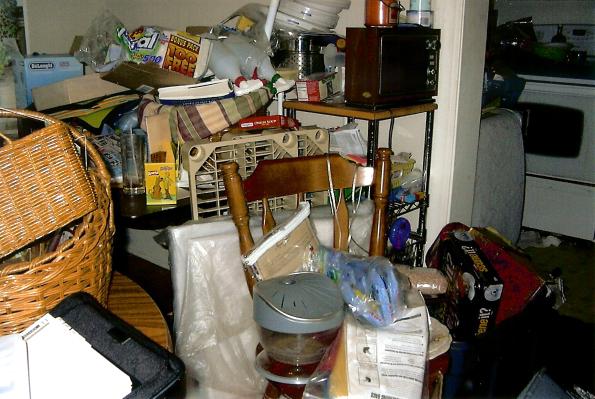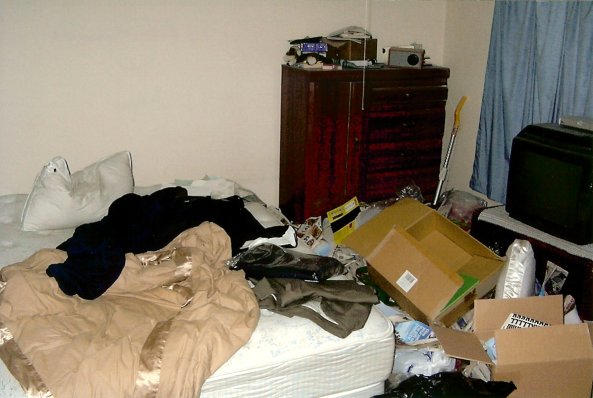Home *
Who *
What *
Causes *
Treatment *
Get Help *
Family *
Resources
Children *
About Overcome OCD! *
Directions
Hoarding
Hoarding is a form of OCD that is characterized by the accumulation of large amounts of items
that create significant clutter within a person's home. Typically, people who hoard buy items
that they do not need presently, or in amounts far greater than necessary. These purchases are often
impulsive and enjoyable to the person. Yet sadly, many of these items wind up never being used,
and in many cases they are never even taken out of the bag from the store.
Instead, they just get added to the piles of clutter scattered around the home.
People who hoard also accumulate items that are truly useless (like old newspapers).
Additionally, people who hoard tend to have little or no organization for all these items, so that
they are often unable to find an item when needed.
At its worst, a person's
home can become so filled with items that movement is limited to narrow paths between piles, much like
a tightly packed warehouse.
Bathrooms and kitchens can become unhygienic.
It is easy to understand why people who hoard are often very embarrassed to
let others see their home. Hoarding can even extend to a person's car and garage.
Clearly, hoarding can become a severely debilitating condition that gets worse over time.
Like other forms of OCD, anxiety is at the core of hoarding. That is, people who hoard experience anxiety at
the thought of throwing out items because they may one day have a need for the item, no matter
how useless the item is. But often times, people who hoard also experience a sense of needing
each of the countless items. This is the emotional experience called dependency, and this is what
makes hoarding different from other types of OCD. For this reason, the treatment of hoarding is a little
different than the typical Exposure and Response Prevention treatment protocol for other forms of OCD, and
the treatment of hoarding tends to be a more difficult treatment process. In treatment, the person is given
daily assignments to confront his or her fears about disposing of the items.
In addition, this is accompanied by work
in the therapy sessions about facing the emotional pain associated with the dependency.
Both the anxiety and dependency need to be helped in order for hoarding to improve.
Below are some photos of an actual case of hoarding. These photos are presented with
permission.


The living room

The dining room

The bedroom